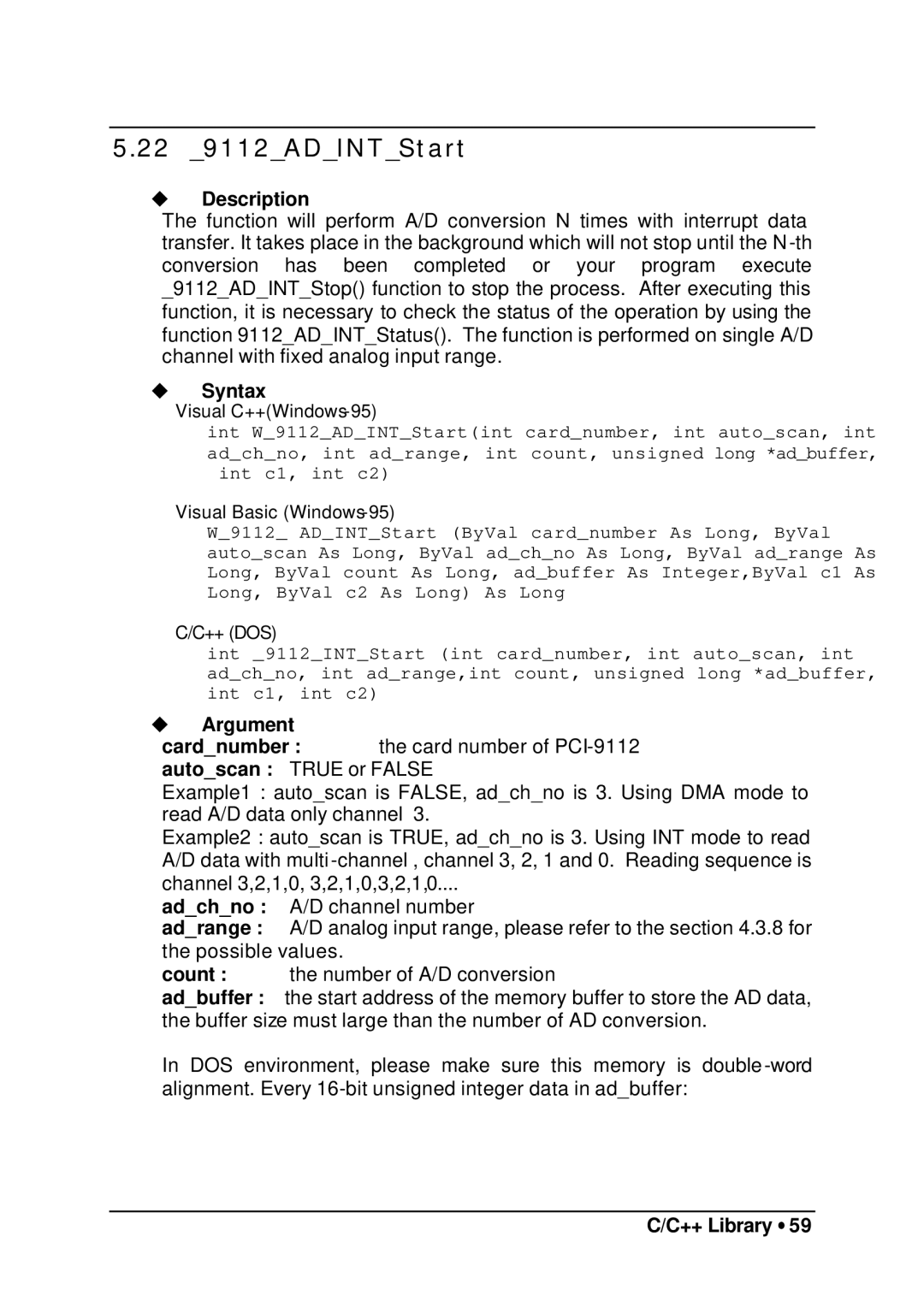
5.22 _9112_AD_INT_Start
uDescription
The function will perform A/D conversion N times with interrupt data transfer. It takes place in the background which will not stop until the N
uSyntax
Visual
int W_9112_AD_INT_Start(int card_number, int auto_scan, int ad_ch_no, int ad_range, int count, unsigned long *ad_buffer,
int c1, int c2)
Visual Basic
W_9112_ AD_INT_Start (ByVal card_number As Long, ByVal auto_scan As Long, ByVal ad_ch_no As Long, ByVal ad_range As Long, ByVal count As Long, ad_buffer As Integer,ByVal c1 As Long, ByVal c2 As Long) As Long
C/C++ (DOS)
int _9112_INT_Start (int card_number, int auto_scan, int ad_ch_no, int ad_range,int count, unsigned long *ad_buffer, int c1, int c2)
uArgument
card_number : the card number of
auto_scan : TRUE or FALSE
Example1 : auto_scan is FALSE, ad_ch_no is 3. Using DMA mode to read A/D data only channel 3.
Example2 : auto_scan is TRUE, ad_ch_no is 3. Using INT mode to read A/D data with multi
ad_ch_no : A/D channel number
ad_range : A/D analog input range, please refer to the section 4.3.8 for the possible values.
count : the number of A/D conversion
ad_buffer : the start address of the memory buffer to store the AD data, the buffer size must large than the number of AD conversion.
In DOS environment, please make sure this memory is double
